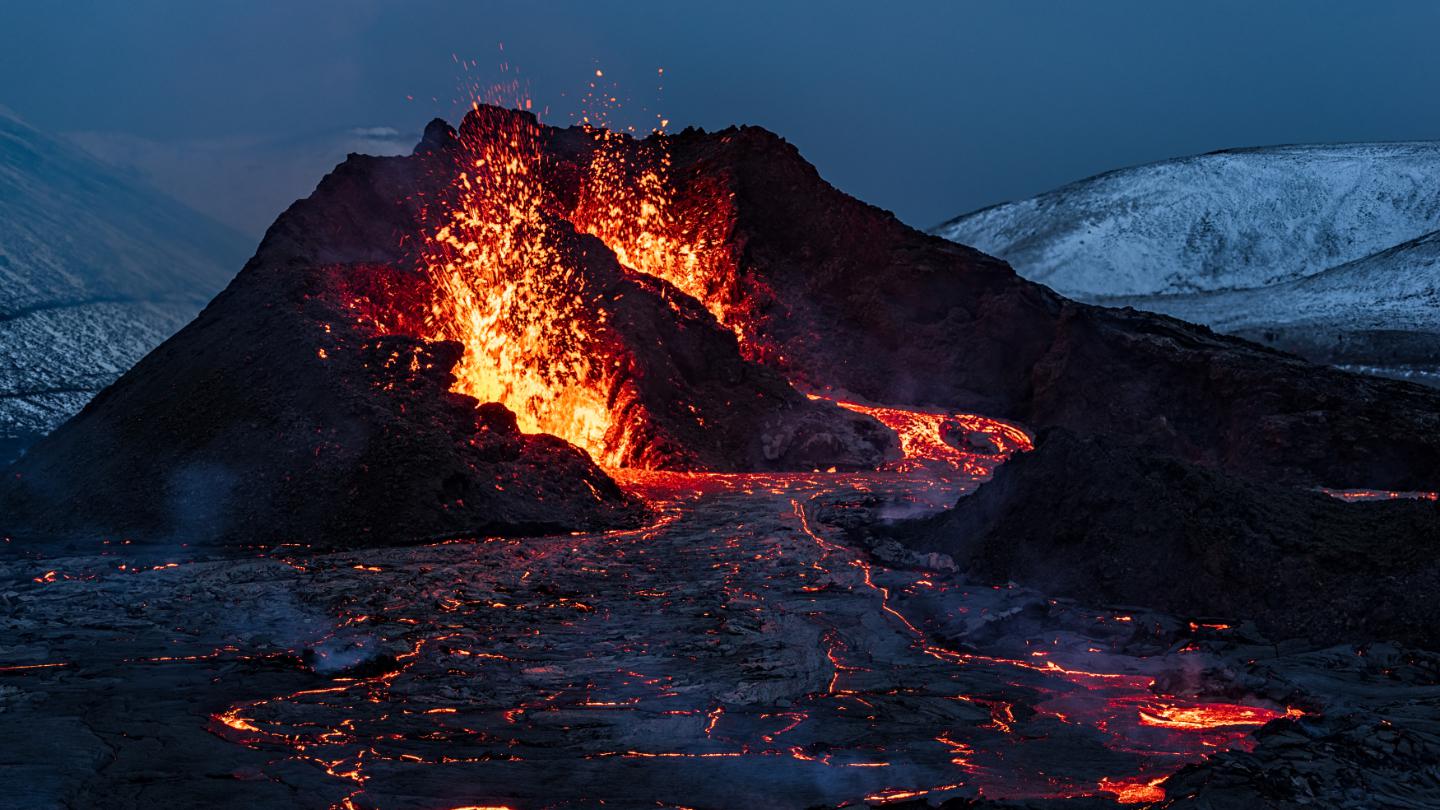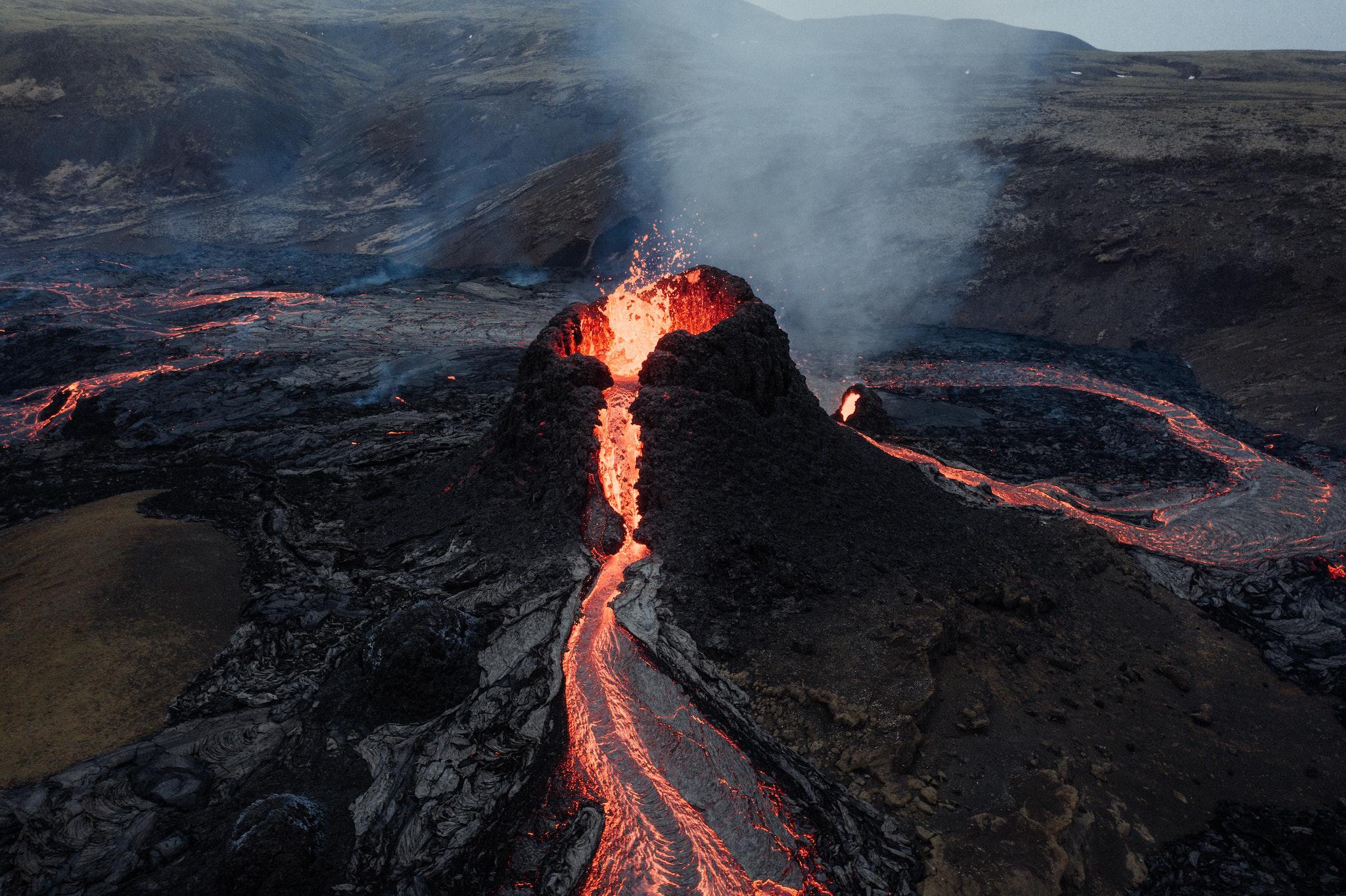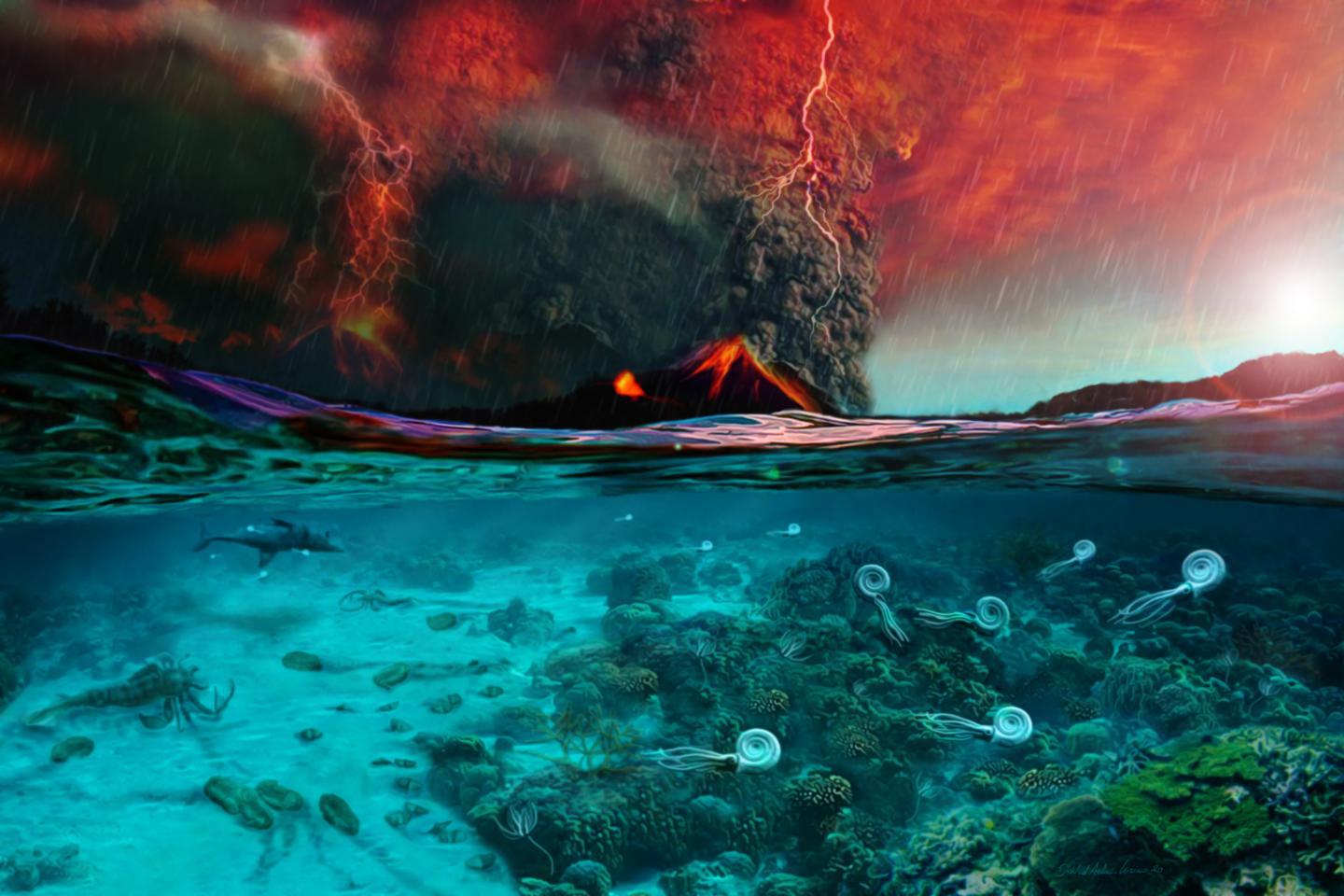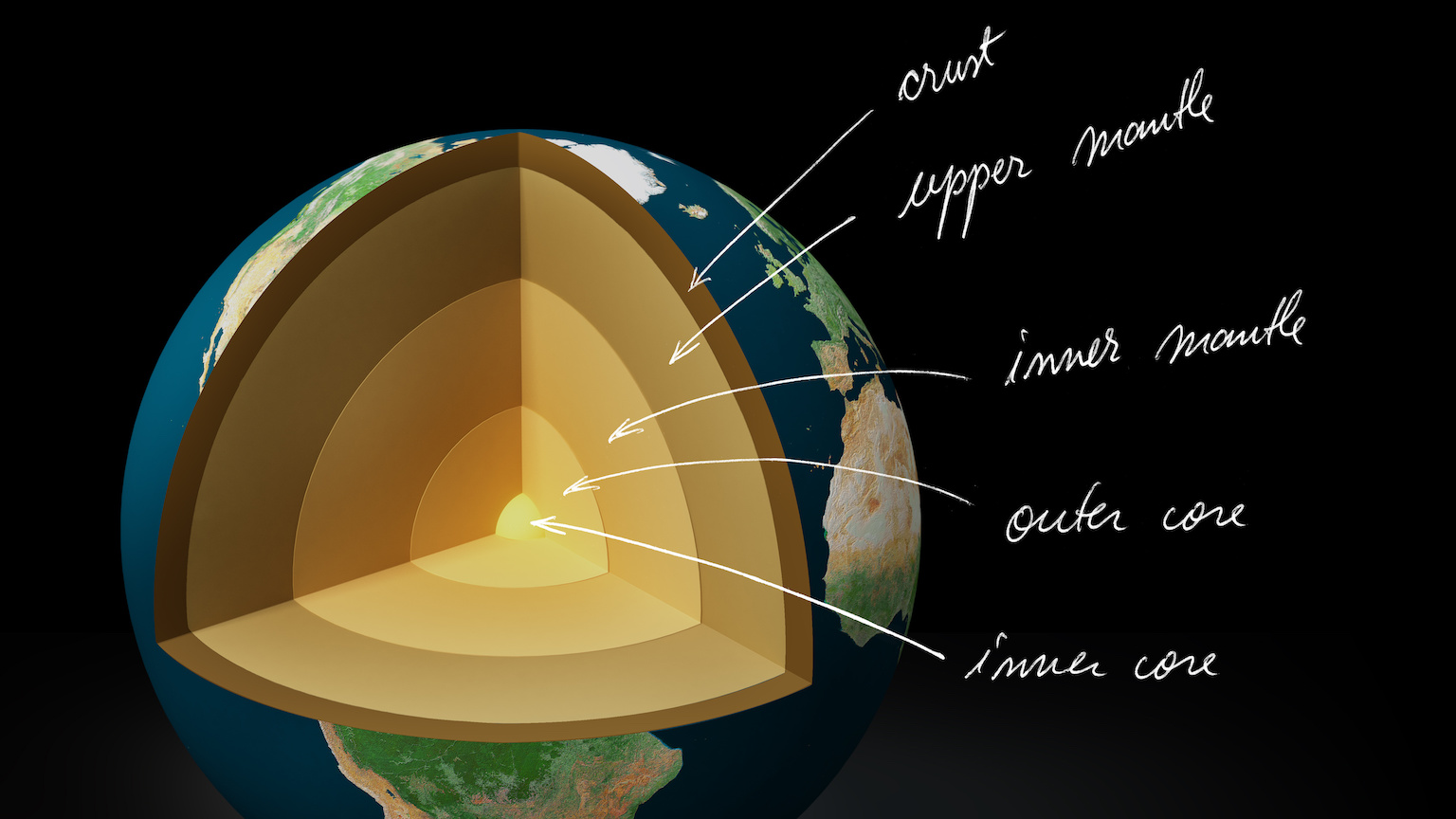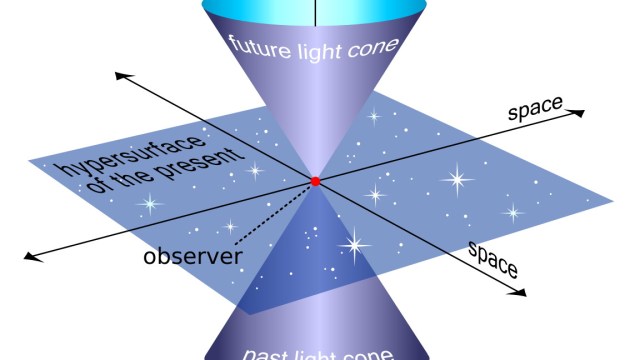Volcano-triggered mass extinction paved the way for the dinosaurs
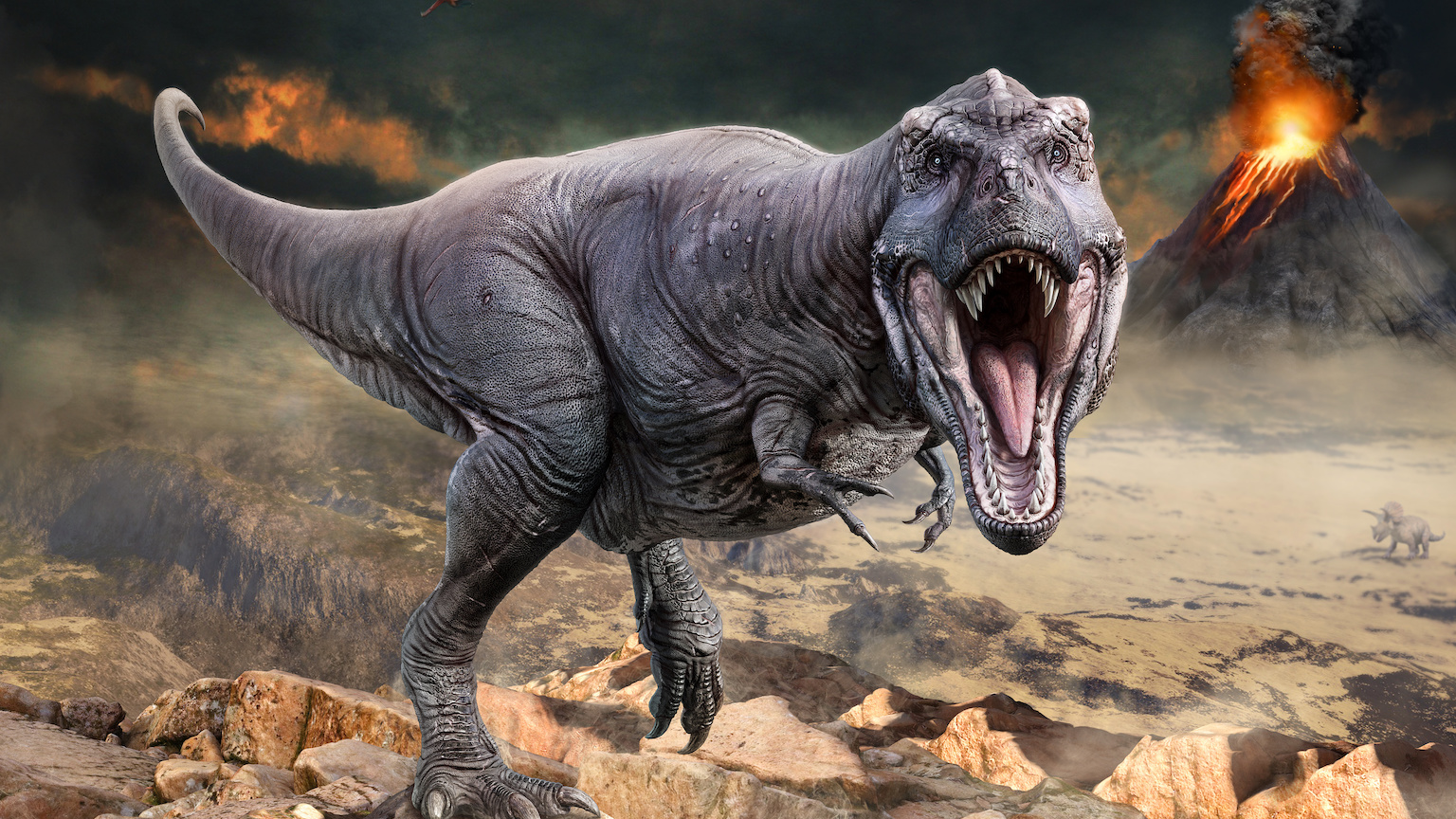
- Volcanic activity is a key factor in many of the Earth’s mass extinctions.
- When magma is heated to different temperatures, it produces different gases. These in turn can heat or cool the planet on a global scale.
- About 200 million years ago, the end-Triassic extinction killed off about three-fourths of the world’s marine and land life but left a niche for dinosaurs, which survived the extinction and rose to dominance.
Over the course of the Earth’s history, the planet has witnessed five mass extinctions. One of these was the result of a giant asteroid hitting the Yucatán Peninsula. This event triggered an extinction at the end of the Cretaceous period, killing off the dinosaurs. Far more common, however, are extinction events triggered by extensive volcanic activity.
But how does rampant volcanism actually cause a mass extinction? The link between volcanic activity and climate is not so straightforward. Finding this connection was the goal of an international team of scientists led by Kunio Kaiho from Japan’s Tohoku University. The researchers studied the volcanic event that led to a mass extinction at the end of the Triassic Period. They recently published their findings in the journal Earth and Planetary Science Letters.
Volcanoes made way for the dinosaurs
About 200 million years ago, the end-Triassic extinction killed off about three-fourths of the world’s marine and land life. This was the end of trilobites, ammonoids, and gigantic crocodile-like animals called phytosaurs — fearful predators that could reach lengths of 12 meters. After phytosaurs disappeared, a niche was left open for dinosaurs, who survived the extinction and rose to dominance.
The end-Triassic extinction is normally thought to be connected to a huge eruption of the Central Atlantic Magmatic Province. This broad volcanic region developed the rift that split Pangea down the middle, separating the present-day Amazon from Western Africa, and North America’s Atlantic seaboard from Europe.
The volcanic eruptions we see today are trivial in comparison. “Supercontinent rift-related volcanism [can] trigger this level of volcanic activity,” Kaiho told Big Think. As the supercontinent broke apart, four large surges of volcanism released huge amounts of gasses and lava.
Yet how exactly volcanism relates to the extinction has remained unclear.
How volcanism changes the atmosphere
To understand how widespread volcanic activity changes the climate, Kaiho’s team took samples of limestone and mudstone from strata corresponding to the end-Triassic period in present-day England and Austria. In the lab, they heated the stone to temperatures ranging from 350 to 1100 degrees Celsius, attempting to understand what happens when hot magma comes into contact with sedimentary rocks containing hydrocarbons and sulfur.
What they saw was surprising.
“Low-temperature heating formed [sulfur dioxide] from sulfide,” Kaiho explained. In the atmosphere, sulfur dioxide creates acid rain. It also blocks radiation from the sun, leading to global cooling in the short term (for about a decade).
When they heated rock to higher temperatures, the team saw something else. At these temperatures, carbon dioxide formed from hydrocarbons in the rocks. Carbon dioxide affects the environment for a much longer period of time, and unlike sulfur dioxide, it heats the Earth.
How does this relate to what actually happened?
Traces set in stone
Four major surges of volcanism marked the first 300,000 years of the end-of-Triassic extinction. The temperature of magma can be tracked, in a way, using a polycyclic aromatic hydrocarbon, or PAH, called coronene. This PAH needs high temperatures to form, so its presence can serve as a way to trace magma temperatures.
Looking at their samples, the team was able to measure coronene abundance and how it changed during the surges of volcanic activity.
The first volcanic event corresponded to a low coronene index within the rock. This is consistent with low-temperature heating of magma over the course of about 100 to 300 years. These eruptions caused forest fires, soil erosion, and the first surge of marine extinction. Because of the low-temperature magma heating, sulfur dioxide was released, cooling the atmosphere. Overall, the globe could have cooled by 8° C, devastating life both on land and in the sea.
After the second volcanic event, the world’s animals and plants began to recover. However, shortly later, the third and fourth volcanic surge occurred. The last three events all correspond to higher coronene indexes, indicating that the magma was much hotter. It released carbon dioxide and led to global warming.
These results show that the effect of volcanism on the environment is not always straightforward. It can lead to planetary-scale heating, but also to cooling.
